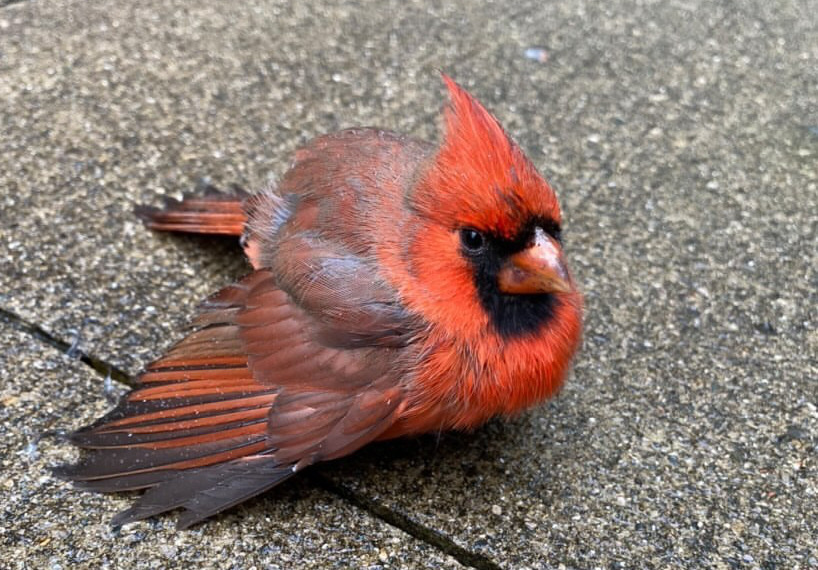Opening the black box of bird-window collisions
PeerJ
Collisions with glass windows on buildings, transportation shelters, noise barriers and fences are a major source of bird mortality.
New research published in the Open Access, peer-reviewed journal PeerJ provides the first glimpse of what happens in the moments leading up to a bird colliding or avoiding impact with a window, by analyzing audio and motion-triggered video recordings at a residential setting with bird feeders.
The article offers novel insight on a very important
conservation topic and provides empirical data that are currently lacking but
necessary for informing estimates of population-level impacts of bird mortality
as well as designing effective collision prevention technologies.
Researchers from Western University and Purdue University compared the characteristics of birds' flights leading up to a collision to flights leading to a near miss. They recorded and analyzed 29 collisions and nine near-misses.
Birds' flight velocity and angle of approach both predicted
the outcomes following collisions, with faster flights at angles of approach
closer to perpendicular being more dangerous for birds. These data reveal
previously undocumented variation in birds' pre-collision behaviour.
Of the 29 collisions that were recorded during the study, only a small proportion resulted in an immediate fatality and were detected by building occupants. Most collisions were followed by the bird flying away without leaving a trace. It is believed that some of these birds may suffer injuries and later die far from the window site.
This finding has implications for estimating population-level impacts of bird-window collisions and suggests that the extent of collisions may be vastly underestimated by traditional survey methods.
"Bird-window collisions happen all over the world throughout the year, but the frequency and severity of collisions seem to be underestimated by the public, especially at residential settings," writes Brendon Samuels, the first author.
"One reason is that collisions happen
suddenly and are difficult for people to observe directly. When birds fly away
afterwards, it's unclear what ultimately happens to them. Our findings
highlight how common collisions can be in residential settings, especially
where there are bird attractants like feeders."
Research on bird-window collisions has focused mostly on quantifying the incidence of fatal window collisions at larger structures, yet residential buildings are the most numerous types of structure with windows, and thus represent the greatest cumulative threat to birds.
New housing
development is being prioritized in many parts of the world as appetite for
large glass windows and glass railings continues to grow. Meanwhile, backyard
bird feeding has gained in popularity over the pandemic, drawing more birds
into high-risk settings.
New buildings can be designed based on practices that limit risk of bird-window collisions. Similarly, existing building windows, such as those on homes, can be retrofitted using simple materials to add visual markers to the exterior of the glass.
An important direction for future research is to
characterize how birds orient their eyes to detect and avoid collisions with
windows, so that collision deterrents can be designed optimally to match bird
vision. This study documented birds approaching windows from variable angles.
The authors recommend that designs and tests of collision prevention
technologies should take this into account.
The authors developed recommendations for actions aimed at
reducing bird mortality caused by window collisions, and overcoming current
knowledge gaps by providing scientists, practitioners, and policymakers with
priorities to help inform future research and monitoring studies.
Recommendations
Estimates of bird-window collision mortality that are based on
data collected through building surveys and other observational monitoring
depending on carcass detection should consider that those methods will miss
most collision events that occur but may not leave a trace behind. The total
number of collisions that occur at a given building, or on a continent-wide
scale, may be vastly underestimated.
Additional studies that can characterize how flight
characteristics affect the force experienced by a bird during a collision will
provide better estimates of the negative effects on birds that are able to fly
away following a collision.
Although this study did not examine the effectiveness of bird
collision deterrents, the risk of collisions at existing and new structures can
be reduced through the application of "bird-friendly" materials such
as fritted glass, window film or other visual markers.
This study found evidence that bird collisions occurred nearly as frequently with smaller transom windows as with large glass doors below. This contradicts findings of previous research that collisions are positively correlated with window area.
Further research is needed to examine how
façade-level characteristics of residential buildings, such as window area,
influence collision risk. Windows of all sizes should be targeted for
mitigating collision risk using deterrent technologies and evidence-based
building design practices as outlined by bird friendly standards and
guidelines.
Given that birds' flight velocity prior to impact predicts the lethality of collisions with windows, we recommend that bird attractants (feeders or baths) should be placed close to windows (within 1.5 feet or 0.5 m) to reduce the available space where birds can gain speed.
